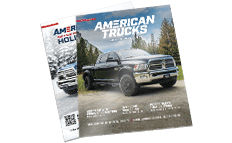
The History of NASCAR
The National Association for Stock Car Auto Racing, or NASCAR as it's more popularly known, is one of the most viewed professional sports in the United States, second only to professional football. Since its inception in 1947, NASCAR has expanded at a rate comparable to some of the speeds seen around the track, broadcasting in over 150 countries and holding 17 of the top-20 attended single-day sporting events in the world. In addition, it claims 75 million fans who purchase over $3 billion worth of licensed products annually—that's a lot of logoed mesh hats, my friends. And, all this sprang up from humble beginnings.
After World War II, stock-car racing saw a boom in popularity, with record crowds flocking to tracks throughout the country. Despite the draw, there was no established organization, with rules varying from track to track. Some tracks were just makeshift facilities, created solely to capitalize on large crowds at a county fair or similar large public venue. Other tracks were more suited to handle the cars, but not the crowds.
Recognizing a need and the potential opportunity that accompanied it, Bill France Sr., of Daytona Beach, Fla., held a meeting at the Streamline Hotel in December 1947 to discuss the problems facing stock-car racing. When the meeting adjourned, NASCAR had been born, with the points system written on a bar room napkin. NASCAR was incorporated by France, Sr., a driver himself, on February 21, 1948 with the help of several of his fellow drivers. The original intent of NASCAR was to offer three distinct divisions: modified, roadster, and strictly stock. But as it turned out, fans couldn't have cared less for the roadsters, perceiving them as a Northeast or Midwest pursuit.
The first NASCAR "strictly stock" race was held at Charlotte Speedway and won by Jim Roper after Glenn Dunnaway was disqualified for altering his rear springs. The "Strictly Stock Division" was initially raced with almost no modifications to the factory models. Over the decade that would follow, modifications to things like brakes and the muffler were eventually allowed for both safety and performance. By the mid-1960s, vehicles appearing on the track had a stock-car body and were built for the specific purpose of racing, with the addition of car accessories that included performance brake pads and catalytic converters.
With a green light from highly-supportive fans, NASCAR's premier division took the lead in worldwide motorsports attendance in 1976 with more than 1.4 million spectators in the stands. Television soon followed, and the 1979 Daytona 500 becoming the first 500-mile race in history to be telecast live in its entirety. Corporate sponsorships soon followed, with Fortune 500 companies sponsoring the events, individual races and teams as well. Not bad for something that remains a family-owned business.
You don't have to be a NASCAR driver to upgrade your ride with the latest car accessories. Easy and affordable, do-it-yourself upgrades like catalytic converters or a muffler can provide huge gains in power and streamline the efficiency of your engine.

